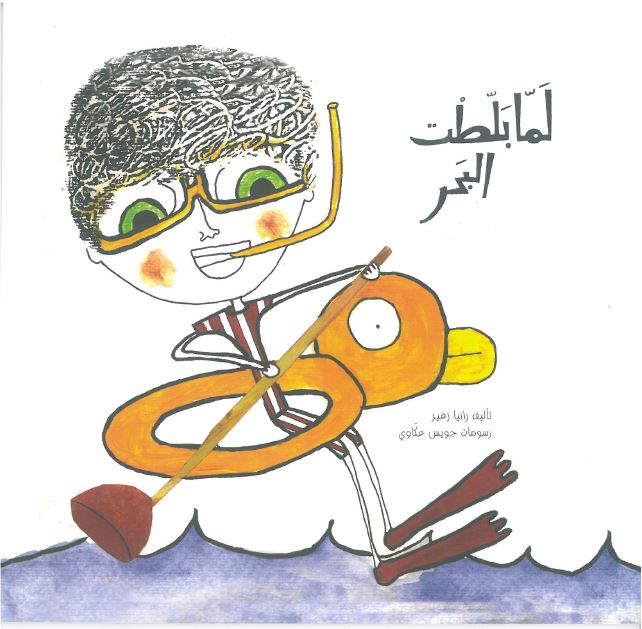
ספר משעשע שמציג לילדים את עולם הניבים והביטויים, הצובעים את האינטראקציה המילולית היומיומית בין בני משפחה בבית ערבי, ומצית את דמיונו של הילד.

ספר משעשע שמציג לילדים את עולם הניבים והביטויים, הצובעים את האינטראקציה המילולית היומיומית בין בני משפחה בבית ערבי, ומצית את דמיונו של הילד.
كيف يساهم المثل في تطوير قدرات الطفل التفكيرية، وإثراء خياله ووعيه النّغمي؟ تابعوا قراءة اقتراحاتنا للنشاط في البستان.
פעילות בגן ובכיתהDear Parents,
"Sometimes I don't understand what my mom is trying to say", the child complains when he hears a traditional idiom to describe a situation. Idioms are prevalent in our daily speech - in general in the adult speech - where children are exposed to them.
Idioms are often a mystery for children, especially young children, since they are metaphoric and demand a high cognitive ability to understand. Therefore, it is important for parents to help their children understand the meaning of idioms, connecting the expression to real situations to help enrich the child's language, imagination and thoughts.
Some idioms have a story behind them, and it can be fun for children to hear the story (perhaps from grandparents) that inspired the idiomatic expression. You can also help your children draw a book using the idioms that family members often says. The family will be pleased to have this kind of a present.
Here are activities related to four idioms mentioned in this book:
المربّية العزيزة،
تحضر الأمثال الشّعبيّة في كلامنا اليوميّ، وتتميّز بها لغتنا العربيّة بتنوّع لهجاتها. فما هو المثل الشّعبي؟
المثل قولٌ موجز، قيل في مناسبة معيّنة، وصار يردّد على السنة النّاس في مناسباتٍ شبيهة. تناقل النّاس الأمثال عبر الأجيال، لطرافة أسلوبها ولما فيها من قوّة التّعبير. ويختلف اصل الأمثال؛ فمنها ما استُمِدّ من قصّة، مثل "بين حانا ومانا ضاعت لِحانا"، ومنها ما يرتبط بملاحظة النّاس لظواهر طبيعيّة، مثل "آذار أبو الزلازل والأمطار"، وغيرها.
تشكّل الأمثال تحدّيًا للأطفال من حيث فهمها. فهي تتضمّن معاني مجازيّة يتطلّب فهمها قدرة على التفكير المجرّد. تدلّنا دراسات نموّ الطّفل على أنّ هذه القدرة تتطوّر لدى الأطفال نحو نهاية سنتهم السّادسة. عليه، يحتاج أطفال البستان إلى مساندتنا في فهم الأمثال والتّمتع بها، وذلك من خلال ترجمتها إلى المحسوس، وربطها بسياقاتٍ حياتيّة يومية ومُعاشة للطفل. نشير إلى أنّ العديد من الأمثال الشّعبيّة لها قصّة، ممّا يسهّل على الطّفل فهمها.
ماذا يكتسب الطّفل من الانكشاف إلى الأمثال الشّعبية؟ أوّلاً، المثل نافذة يتعرّف من خلالها الطفل على بيئته الاجتماعيّة والمادّية. فكلمات الأمثال عادة مستقاة من المألوف واليومي في حياة النّاس ( أعط الخبز لخبّازه، وطنجرة ولاقت غطاها)، ومن خلال المثل يكتسب الطفل قيمًا اجتماعيّة وإنسانية (إسأل عن الجار قبل الدّار) وفهمًا أعمق لسلوكياته ولسلوكيّات الآخرين (عرج الجمل من شفتّه).
يمتاز المثل الشّعبي عادة بمبناه السّجعي ( البُعُد جفا والقرب دفا) ممّا يسهّل على الكبار والصغار حفظه، ويساهم في تطوير الوعي النغمي لدى الأطفال، وفي تطزير خياله. أخيرًا، هناك العديد من الأمثال المضحكة التي يتمتّع الأطفال بتردادها وتمثيلها.